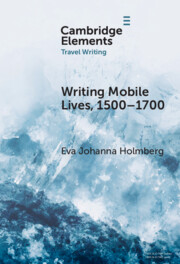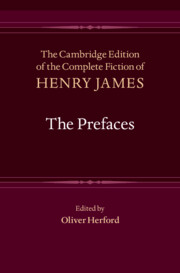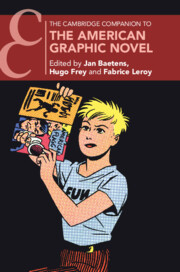116 results
27 - History Touches Us Everywhere
- from Queer Genre
-
-
- Book:
- The Cambridge History of Queer American Literature
- Published online:
- 17 May 2024
- Print publication:
- 06 June 2024, pp 470-486
-
- Chapter
- Export citation
Chapter 4 - “The Age-Long Memoried Self”
-
- Book:
- Yeats, Revival, and the Temporalities of Irish Modernism
- Published online:
- 11 April 2024
- Print publication:
- 18 April 2024, pp 121-159
-
- Chapter
- Export citation
Chapter 19 - Photography
- from Part V - Life, Illness, and the Arts
-
-
- Book:
- Robert Lowell In Context
- Published online:
- 28 March 2024
- Print publication:
- 04 April 2024, pp 206-215
-
- Chapter
- Export citation
Chapter 25 - Lowell’s Influence
- from Part VI - Reputation and New Contexts
-
-
- Book:
- Robert Lowell In Context
- Published online:
- 28 March 2024
- Print publication:
- 04 April 2024, pp 272-283
-
- Chapter
- Export citation
Chapter 21 - Letters
- from Part VI - Reputation and New Contexts
-
-
- Book:
- Robert Lowell In Context
- Published online:
- 28 March 2024
- Print publication:
- 04 April 2024, pp 229-237
-
- Chapter
- Export citation
Chapter 11 - T. S. Eliot
- from Part IV - Contemporaries
-
-
- Book:
- Robert Lowell In Context
- Published online:
- 28 March 2024
- Print publication:
- 04 April 2024, pp 121-129
-
- Chapter
- Export citation

Writing Mobile Lives, 1500–1700
-
- Published online:
- 14 March 2024
- Print publication:
- 04 April 2024
-
- Element
-
- You have access
- Open access
- HTML
- Export citation

The Prefaces
-
- Published online:
- 08 March 2024
- Print publication:
- 28 March 2024
16 - Just Passing Through?
-
-
- Book:
- The Nile Delta
- Published online:
- 15 February 2024
- Print publication:
- 22 February 2024, pp 569-594
-
- Chapter
- Export citation
Prologue
-
- Book:
- V. S. Naipaul and World Literature
- Published online:
- 01 February 2024
- Print publication:
- 08 February 2024, pp 1-5
-
- Chapter
- Export citation
II.9 - Sæwulf, An Account of a Pilgrimage to Jerusalem
- from Twelfth Century
-
- Book:
- The Cambridge Anthology of British Medieval Latin
- Published online:
- 11 January 2024
- Print publication:
- 01 February 2024, pp 100-105
-
- Chapter
- Export citation
I.1 - Patrick, Confession
- from Fifth Century
-
- Book:
- The Cambridge Anthology of British Medieval Latin
- Published online:
- 11 January 2024
- Print publication:
- 01 February 2024, pp 37-42
-
- Chapter
- Export citation
Chapter 1 - Byron’s Life and His Biographers
-
-
- Book:
- The Cambridge Companion to Byron
- Published online:
- 02 November 2023
- Print publication:
- 16 November 2023, pp 1-22
-
- Chapter
- Export citation
Chapter 7 - Legends of Zelda
-
-
- Book:
- The Cambridge Companion to F. Scott Fitzgerald
- Published online:
- 26 October 2023
- Print publication:
- 09 November 2023, pp 154-176
-
- Chapter
- Export citation
8 - The Power of Song in Beach’s Orchestral Works
- from Part II - Profiles of the Music
-
-
- Book:
- The Cambridge Companion to Amy Beach
- Published online:
- 19 October 2023
- Print publication:
- 02 November 2023, pp 154-179
-
- Chapter
- Export citation
3 - From Justin Green and Art Spiegelman to Alison Bechdel
- from Part I - History and Genre
-
-
- Book:
- The Cambridge Companion to the American Graphic Novel
- Published online:
- 10 January 2024
- Print publication:
- 28 September 2023, pp 57-71
-
- Chapter
- Export citation
15 - Queer Graphic Novels
- from Part II - Graphic Novels and the Quest for an American Diversity
-
-
- Book:
- The Cambridge Companion to the American Graphic Novel
- Published online:
- 10 January 2024
- Print publication:
- 28 September 2023, pp 256-271
-
- Chapter
- Export citation
10 - Expressions of Jewishness alongside Grief in American Graphic Novels
- from Part II - Graphic Novels and the Quest for an American Diversity
-
-
- Book:
- The Cambridge Companion to the American Graphic Novel
- Published online:
- 10 January 2024
- Print publication:
- 28 September 2023, pp 177-192
-
- Chapter
- Export citation
9 - “Scared Witless”
- from Part I - History and Genre
-
-
- Book:
- The Cambridge Companion to the American Graphic Novel
- Published online:
- 10 January 2024
- Print publication:
- 28 September 2023, pp 155-174
-
- Chapter
- Export citation

The Cambridge Companion to the American Graphic Novel
-
- Published online:
- 10 January 2024
- Print publication:
- 28 September 2023



